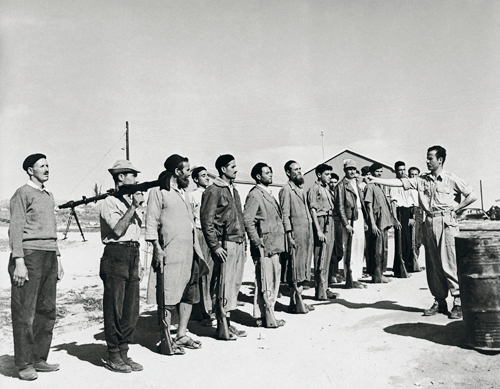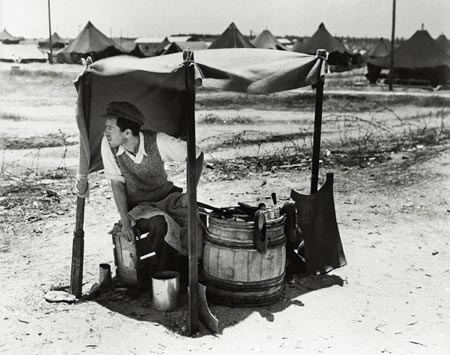| See the Photographers' web-site | | | Abstract
The exhibition, “Beginnings: Photographs 1948-1968” by photographer David Harris, focuses on documentation of the State of Israel’s first two decades, and represents Harris’s best work from this period. These decades were characterized, along with shaping the direction of the country and building its infrastructures, by the encounter between populations from different cultures, difficulties of absorption in the new land, financial hardship (transit camps, austerity) and questions raised by the results of wars. Harris’s work in these years, made chiefly for the national institutions, reflects the country’s official information policy and its Zionist message. Thus, the main characteristic of the work of Harris, who sees himself as a national photographer, was documenting the crisis period from an optimistic perspective. Poverty, difficulties of immigration and absorption, distress caused by attempts to create a “melting pot,” together with financial and security burdens – all these he described in a sympathetic and idyllic way. Furthermore, he only photographed subjects that placed Israel in a favorable light with regard to the local Arab population (for example, the return of refugees from Jordan shortly after the Six Day War). This type of photography, to a large degree, is a continuation of the style of photography that preceded the establishment of the state. However, while Pre-State photography described the new, proud Jew by choosing to embellish reality, and to conceal the hardships and unflattering aspects of settlement in Israel, Harris and his contemporaries described the difficulties of the first two decades of the state from a positive and complimentary point of view.
David Harris (1929-2008, Jerusalem) studied painting in his youth with the artist, Shmuel Haruvi. At age thirteen, he received a Kodak box camera as a gift from his sister, and has been taking photographs ever since. In 1945, he planned to register in the photography department at Bezalel that photographer Lu Landauer wished to establish. However, Landauer’s initiative did not materialize, and consequently Harris learned photography (1945-1946) as an apprentice to Leo Arthur Rubitchek, who owned a photography studio on King George Street in Jerusalem, opposite the Jewish Agency building. From 1947, Harris worked for a short time as a military photographer and then for the information departments (previously propaganda) of the national institutions, chiefly the Jewish Agency. There he worked under the management of the esteemed photographer Shmuel Yosef Schweig.
Since there was no organized program for learning photography in Israel, Harris traveled to New York to study at the School of Modern Photography (1951-1952), and on his return to Israel, continued photographing for the Jewish Agency information department (1952-1958). Later Harris worked independently as a photographer for the press, for other national institutions (mainly United Israel Appeal and The Jewish National Fund), and as an archeological and commercial photographer. In 1965, he also began photographing objects of art for the Israel Museum. In the years 1978-1983, Harris acted as Head of the Department of Photography at Hadassah College, taking the place of photographer Ephraim Degani.
| | | | For the Avi Chai web-site | | | | For the Photographers' web-site | | |
| | | |  | | David Harris, Weapons Training for new Immigrants from North Africa, , Moshav Harovit, 1951, Courtesy the Harris family
| | |  | | David Harris, Immigrants from Eastern Europe , Kiryat Yovel, Jerusalem, 1959, Courtesy the Harris family
| | |  | | David Harris, Transit Camp , 1951, Courtesy the Harris Family | | |
|